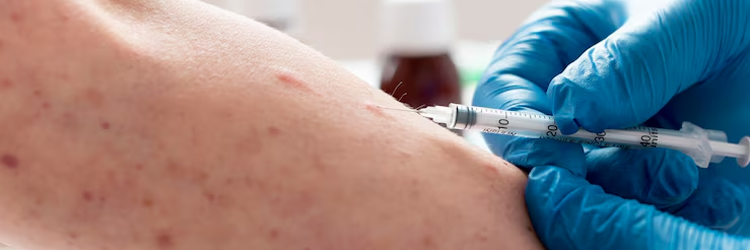What is Shingles (Herpes Zoster)?
Shingles, medically known as herpes zoster, is a painful and blistering nerve infection caused by the reactivation of the chickenpox virus (varicella-zoster). After a person has had chickenpox during childhood, the virus settles in the nerve roots of the body and remains dormant for years. In situations where the immune system becomes weakened, the virus reactivates, leading to the development of shingles. The answer to the question “What is shingles?” is actually the sudden reactivation of a virus that had been lying dormant in the body.
Shingles typically manifests as blistering rashes that develop along a single side of the body, following nerve pathways. Before the rash appears, individuals may experience severe burning, tingling, or pain. Once the rash appears, redness and fluid-filled blisters form on the skin. These blisters eventually burst, crust over, and the healing process begins. However, the most striking symptom is that the pain often starts before the rash, and even after the rash disappears, the pain may persist for a long time. This condition is known as postherpetic neuralgia, which can turn into chronic nerve pain in some individuals.
Shingles is most commonly seen in individuals over the age of 50, those with weakened immune systems, people under stress, or individuals who have had serious illnesses like cancer. However, it can also occur in younger individuals. The disease is not contagious, but people who come into close contact with someone who has shingles and have not had chickenpox before can contract chickenpox. Therefore, it is advised to avoid close contact with children and pregnant women.
Early diagnosis is crucial in the treatment of shingles. Antiviral medications, if started within 72 hours of the first symptoms, can shorten the duration of the disease and reduce the risk of complications. Pain can be alleviated through painkillers, nerve-protective medications, and topical creams under a doctor’s supervision. Additionally, lifestyle habits that strengthen the immune system and the shingles vaccine are preventive measures that can reduce the risk of developing the disease.
Shingles is treatable, but if neglected, it can lead to long-lasting pain and a decrease in quality of life. In case of suspicious skin rashes or sudden unexplained nerve pain, it is important to consult a dermatology specialist without delay.
This content has been prepared following the recommendations of Associate Professor Dr. Tuğba Falay Gür.










